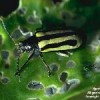 Alligatorweed is an aquatic weed native to South America that began threatening Florida’s waterways in the early 1900s. Alligatorweed flea beetles kill the plant by destroying its stored food and interfering with photosynthesis by removing leaf tissue. This insect has been an extremely effective biological control agent in coastal regions of the southeastern United States. This 3-page fact sheet was written by Ted D. Center, James P. Cuda, Michael J. Grodowitz, and published by the UF Department of Entomology and Nematology, October 2012.
Alligatorweed is an aquatic weed native to South America that began threatening Florida’s waterways in the early 1900s. Alligatorweed flea beetles kill the plant by destroying its stored food and interfering with photosynthesis by removing leaf tissue. This insect has been an extremely effective biological control agent in coastal regions of the southeastern United States. This 3-page fact sheet was written by Ted D. Center, James P. Cuda, Michael J. Grodowitz, and published by the UF Department of Entomology and Nematology, October 2012.
http://edis.ifas.ufl.edu/in831
Tag: Entomology and Nematology Department
Horn Fly Management (ENY288/IN952)
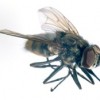 Horn flies are one of the livestock pests with the greatest impact on the health and productivity of cattle. Economic losses due to horn fly damage are estimated at $36 million annually in Florida alone. In the U.S.A. annual losses total between $700 million and $1 billion, with up to $60 million spent on insecticidal control. Horn fly damage is caused by blood feeding. The flies feed frequently and exclusively on blood, piercing the skin of cattle with their proboscis and taking around 20 small blood meals each day. Pain and irritation due to the constant presence of the flies and their bites causes defensive behavior in the cattle that prevents adequate food consumption and rest. This 4-page fact sheet was written by P. E. Kaufman and E. N. I. Weeks, and published by the UF Department of Entomology and Nematology, September 2012.
Horn flies are one of the livestock pests with the greatest impact on the health and productivity of cattle. Economic losses due to horn fly damage are estimated at $36 million annually in Florida alone. In the U.S.A. annual losses total between $700 million and $1 billion, with up to $60 million spent on insecticidal control. Horn fly damage is caused by blood feeding. The flies feed frequently and exclusively on blood, piercing the skin of cattle with their proboscis and taking around 20 small blood meals each day. Pain and irritation due to the constant presence of the flies and their bites causes defensive behavior in the cattle that prevents adequate food consumption and rest. This 4-page fact sheet was written by P. E. Kaufman and E. N. I. Weeks, and published by the UF Department of Entomology and Nematology, September 2012.
http://edis.ifas.ufl.edu/in952
Pesticide Safety Miniposter: Pest Control Vehicle Safety (ENY2013/IN963)
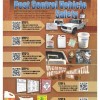 Do you need to train your employees about vehicle safety while transporting pesticides? This poster introduces safety concepts when transporting pesticides on a vehicle and alerts new pest control technicians to the pest control vehicle regulations of the Florida Department of Agriculture. The poster has quick response (QR) codes linked to short, online videos that take the technicians though six steps of maintaining a safe and legal service vehicle. This poster will serve as a valuable training and refresher tool. Designed by R.W. Baldwin, S.K. Hill, Philip Koehler, P.A. Mitola, and J.C. Medley, and published by the UF Department of Entomology and Nematology, August 2012.
Do you need to train your employees about vehicle safety while transporting pesticides? This poster introduces safety concepts when transporting pesticides on a vehicle and alerts new pest control technicians to the pest control vehicle regulations of the Florida Department of Agriculture. The poster has quick response (QR) codes linked to short, online videos that take the technicians though six steps of maintaining a safe and legal service vehicle. This poster will serve as a valuable training and refresher tool. Designed by R.W. Baldwin, S.K. Hill, Philip Koehler, P.A. Mitola, and J.C. Medley, and published by the UF Department of Entomology and Nematology, August 2012.
http://edis.ifas.ufl.edu/in963
Pesticide Safety Miniposter: Pesticide Spill Control (ENY2011/IN961)
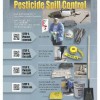 This poster acquaints new pest control technicians with proper procedures to manage an unscheduled pesticide release. The poster has quick response (QR) codes that direct a smartphone to online videos highlighting the steps of cleaning up a pesticide spill site, beginning with controlling the spill and ending with decontamination of the site. This poster will serve as a valuable training tool for new technicians and a refresher tool for pesticide applicators. Designed by R.W. Baldwin, S.K. Hill, Philip Koehler, P.A. Mitola, and J.C. Medley, and published by the UF Department of Entomology and Nematology, August 2012.
This poster acquaints new pest control technicians with proper procedures to manage an unscheduled pesticide release. The poster has quick response (QR) codes that direct a smartphone to online videos highlighting the steps of cleaning up a pesticide spill site, beginning with controlling the spill and ending with decontamination of the site. This poster will serve as a valuable training tool for new technicians and a refresher tool for pesticide applicators. Designed by R.W. Baldwin, S.K. Hill, Philip Koehler, P.A. Mitola, and J.C. Medley, and published by the UF Department of Entomology and Nematology, August 2012.
http://edis.ifas.ufl.edu/in961
Pesticide Safety Miniposter: Triple Rinse Steps (ENY2012/IN962)
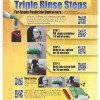 The Triple Rinse poster acquaints new pest management technicians to proper techniques to clean and dispose of empty pesticide containers. The poster uses quick response (QR) codes that direct smartphones to online videos that demonstrate the triple rinse process and container disposal. This poster will serve as a valuable training tool for new technicians and a refresher tool for pesticide applicators. Designed by R.W. Baldwin, S.K. Hill, Philip Koehler, W. Walker, and J.C. Medley, and published by the UF Department of Entomology and Nematology, 8. http://edis.ifas.ufl.edu/in962
The Triple Rinse poster acquaints new pest management technicians to proper techniques to clean and dispose of empty pesticide containers. The poster uses quick response (QR) codes that direct smartphones to online videos that demonstrate the triple rinse process and container disposal. This poster will serve as a valuable training tool for new technicians and a refresher tool for pesticide applicators. Designed by R.W. Baldwin, S.K. Hill, Philip Koehler, W. Walker, and J.C. Medley, and published by the UF Department of Entomology and Nematology, 8. http://edis.ifas.ufl.edu/in962
Florida Bears and Beekeeping (ENY105/AA133)
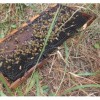 The Florida black bear (Ursus americanus floridanus) is a minor predator of beehives in Florida with the potential to cause major destruction. Large-scale urban and agricultural development inexorably reduces prime bear habitat each year. This habitat also contains excellent bee forage, and so bears and bees will sometimes come in contact, thus resulting in bear predation. This 4-page fact sheet was written by Malcolm T. Sanford and James D. Ellis, and published by the UF Department of Entomology and Nematology, August 2012.
The Florida black bear (Ursus americanus floridanus) is a minor predator of beehives in Florida with the potential to cause major destruction. Large-scale urban and agricultural development inexorably reduces prime bear habitat each year. This habitat also contains excellent bee forage, and so bears and bees will sometimes come in contact, thus resulting in bear predation. This 4-page fact sheet was written by Malcolm T. Sanford and James D. Ellis, and published by the UF Department of Entomology and Nematology, August 2012.
http://edis.ifas.ufl.edu/aa133
Bottling, Labeling and Selling Honey in Florida (ENY159/IN918)
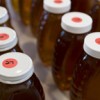 In 2011, the Florida Legislature enacted HB 7209 allowing individuals to manufacture, sell, and store certain types of “cottage foods”(including honey) in an unlicensed kitchen. “Cottage food operations,” as they are called, require no licensing or permitting from the Florida Department of Agriculture and Consumer Services and are not inspected by any other state government entity. This 4-page fact sheet was written by Nancy Gentry and James D. Ellis, and published by the UF Department of Entomology and Nematology, August 2012.
In 2011, the Florida Legislature enacted HB 7209 allowing individuals to manufacture, sell, and store certain types of “cottage foods”(including honey) in an unlicensed kitchen. “Cottage food operations,” as they are called, require no licensing or permitting from the Florida Department of Agriculture and Consumer Services and are not inspected by any other state government entity. This 4-page fact sheet was written by Nancy Gentry and James D. Ellis, and published by the UF Department of Entomology and Nematology, August 2012.
http://edis.ifas.ufl.edu/in918
Pesticide Safety Miniposter: Pesticide Emergencies (ENY916/IN954)
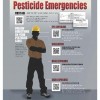 This poster introduces new pest control technicians to the general actions to be taken in the event of pesticide exposure. Technicians learn to recognize symptoms of exposure as they watch videos linked to the quick response (QR) codes on the poster. The videos detail general first aid steps to undertake until medical help arrives after a pesticide exposure. Designed by R.W. Baldwin, S.K. Hill, Philip Koehler, W. Walker, and J.C. Medley, and published by the UF Department of Entomology and Nematology, August 2012.
This poster introduces new pest control technicians to the general actions to be taken in the event of pesticide exposure. Technicians learn to recognize symptoms of exposure as they watch videos linked to the quick response (QR) codes on the poster. The videos detail general first aid steps to undertake until medical help arrives after a pesticide exposure. Designed by R.W. Baldwin, S.K. Hill, Philip Koehler, W. Walker, and J.C. Medley, and published by the UF Department of Entomology and Nematology, August 2012.
http://edis.ifas.ufl.edu/in954
Self-Treatment Methods for Livestock–Backrubbers (ENY279/IG134)
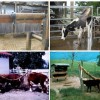 Back rubbers are a method of pesticide self-treatment for cattle. When bothered by insects or other pests, cattle tend to rub against objects. Backrubbers provide a rubbing surface that is treated with a pesticide. Cattle self-treat during rubbing, which reduces the number of flies, particularly horn flies, and parasites such as lice, on the animal. Backrubbers may be purchased commercially or constructed from easily available materials. A properly designed backrubber that supplies pesticide reliably to the animal can be a valuable addition to an integrated pest management program. This 4-page fact sheet was written by E. N. I. Weeks and P. E. Kaufman, and published by the UF Department of Entomology and Nematology, September 2012.
Back rubbers are a method of pesticide self-treatment for cattle. When bothered by insects or other pests, cattle tend to rub against objects. Backrubbers provide a rubbing surface that is treated with a pesticide. Cattle self-treat during rubbing, which reduces the number of flies, particularly horn flies, and parasites such as lice, on the animal. Backrubbers may be purchased commercially or constructed from easily available materials. A properly designed backrubber that supplies pesticide reliably to the animal can be a valuable addition to an integrated pest management program. This 4-page fact sheet was written by E. N. I. Weeks and P. E. Kaufman, and published by the UF Department of Entomology and Nematology, September 2012.
http://edis.ifas.ufl.edu/ig134
Pesticide Safety Miniposter: Pesticide Formulations (ENY915/IN955)
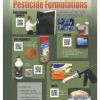 Do you need a quick training reference to common pesticide formulations? This poster introduces new pest control technicians to pesticide product formulations. The poster has quick response (QR) codes that link to videos showing example formulations of liquid pesticides, baits, pressurized aerosols, and a variety of dry product pesticides. Technicians need to be familiar with the products and formulations they are using, so this poster and its videos will be a useful training tool for pest management companies. Designed by R.W. Baldwin, S.K. Hill, Philip Koehler, P.A. Mitola, and J.C. Medley, and published by the UF Department of Entomology and Nematology, August 2012.
Do you need a quick training reference to common pesticide formulations? This poster introduces new pest control technicians to pesticide product formulations. The poster has quick response (QR) codes that link to videos showing example formulations of liquid pesticides, baits, pressurized aerosols, and a variety of dry product pesticides. Technicians need to be familiar with the products and formulations they are using, so this poster and its videos will be a useful training tool for pest management companies. Designed by R.W. Baldwin, S.K. Hill, Philip Koehler, P.A. Mitola, and J.C. Medley, and published by the UF Department of Entomology and Nematology, August 2012.
http://edis.ifas.ufl.edu/in955
Pesticide Safety Miniposter: Daily Personal Care (ENY917/IN956)
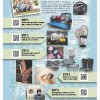 Anyone applying pesticides should be aware of the importance of preventing pesticide exposure to themselves, their families, and their pets by following a few personal care procedures each day. The information and video links (QR codes) on the Daily Personal Care poster provide technicians with examples of areas that are commonly contaminated by pesticides. The poster explains methods for the decontamination of vehicles, application equipment, personal items like cell phones, and clothing. Designed by R.W. Baldwin, S.K. Hill, Philip Koehler, W. Walker, and J.C. Medley, and published by the UF Department of Entomology and Nematology, August 2012.
Anyone applying pesticides should be aware of the importance of preventing pesticide exposure to themselves, their families, and their pets by following a few personal care procedures each day. The information and video links (QR codes) on the Daily Personal Care poster provide technicians with examples of areas that are commonly contaminated by pesticides. The poster explains methods for the decontamination of vehicles, application equipment, personal items like cell phones, and clothing. Designed by R.W. Baldwin, S.K. Hill, Philip Koehler, W. Walker, and J.C. Medley, and published by the UF Department of Entomology and Nematology, August 2012.
http://edis.ifas.ufl.edu/in956
Pesticide Safety Miniposter: Labels and Material Safety Data Sheets (MSDSs) (ENY918/IN958)
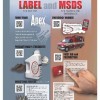 You have heard the phrase, “the label is the law.” Pest control technicians need to learn the components of a pesticide label and the information they can find on the Material Safety Data Sheet (MSDS). This poster acquaints new pest control technicians with the information they will find on pesticide labels and on MSDSs. The poster has quick response (QR) codes that direct smartphones to short, online videos explaining how to read pesticide labels and MSDSs. Designed by R.W. Baldwin, S.K. Hill, Philip Koehler, P.A. Mitola, and J.C. Medley, and published by the UF Department of Entomology and Nematology, August 2012.
You have heard the phrase, “the label is the law.” Pest control technicians need to learn the components of a pesticide label and the information they can find on the Material Safety Data Sheet (MSDS). This poster acquaints new pest control technicians with the information they will find on pesticide labels and on MSDSs. The poster has quick response (QR) codes that direct smartphones to short, online videos explaining how to read pesticide labels and MSDSs. Designed by R.W. Baldwin, S.K. Hill, Philip Koehler, P.A. Mitola, and J.C. Medley, and published by the UF Department of Entomology and Nematology, August 2012.
http://edis.ifas.ufl.edu/in958
Pesticide Safety Miniposter: Apply the Correct Amount (ENY919/IN959)
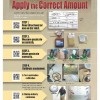 Pest managers must know the proper amount of pesticide product to apply. This poster acquaints new pest control technicians with the basic process of following label instructions to properly dilute pesticides, and it walks technicians through two types of basic equipment calibration. The poster has quick response (QR) codes that link smartphones to online videos illustrating each step in applying the correct amount of pesticides. Designed by R.W. Baldwin, S.K. Hill, Philip Koehler, W. Walker, and J.C. Medley, and published by the UF Department of Entomology and Nematology, August 2012.
Pest managers must know the proper amount of pesticide product to apply. This poster acquaints new pest control technicians with the basic process of following label instructions to properly dilute pesticides, and it walks technicians through two types of basic equipment calibration. The poster has quick response (QR) codes that link smartphones to online videos illustrating each step in applying the correct amount of pesticides. Designed by R.W. Baldwin, S.K. Hill, Philip Koehler, W. Walker, and J.C. Medley, and published by the UF Department of Entomology and Nematology, August 2012.
http://edis.ifas.ufl.edu/in959
Pesticide Safety Miniposter: Protecting Yourself (ENY2010/IN960)
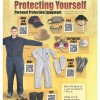 To properly apply pesticides, a technician must be aware of the personal protective equipment, or PPE, required for the application. This poster introduces new pest control technicians to different types of PPE they may be required to wear during a pesticide application or pest management inspection. There is a wide array of examples of PPE on the poster, with quick response (QR) codes that direct smartphones to short, online videos explaining PPE for each area of the body (head, eyes, face, mouth, hands and arms, torso and feet). This poster will serve as a valuable training tool for new technicians and a refresher tool for pest managers. Designed by R.W. Baldwin, S.K. Hill, Philip Koehler, W. Walker, and J.C. Medley, and published by the UF Department of Entomology and Nematology, August 2012.
To properly apply pesticides, a technician must be aware of the personal protective equipment, or PPE, required for the application. This poster introduces new pest control technicians to different types of PPE they may be required to wear during a pesticide application or pest management inspection. There is a wide array of examples of PPE on the poster, with quick response (QR) codes that direct smartphones to short, online videos explaining PPE for each area of the body (head, eyes, face, mouth, hands and arms, torso and feet). This poster will serve as a valuable training tool for new technicians and a refresher tool for pest managers. Designed by R.W. Baldwin, S.K. Hill, Philip Koehler, W. Walker, and J.C. Medley, and published by the UF Department of Entomology and Nematology, August 2012.
http://edis.ifas.ufl.edu/in960
Pepper Fruit Fly Atherigona orientalis (Schiner) (Insecta: Diptera: Muscidae) (EENY539/IN948)
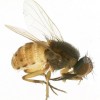 Although it is commonly referred to as the pepper fruit fly or tomato fruit fly, Atherigona orientalis is not a true fruit fly in the family Tephritidae, but rather a member of the Muscidae, the same family to which the common house fly belongs. It is found in most tropical and subtropical areas of the world and is usually considered a secondary pest or “trash fly.” But it can sometimes be a primary pest of certain agricultural crops, most notably plants in the family Solanaceae. This 4-page fact sheet was written by Kenneth L. Hibbard and William A. Overholt, and published by the UF Department of Entomology and Nematology, September 2012.
Although it is commonly referred to as the pepper fruit fly or tomato fruit fly, Atherigona orientalis is not a true fruit fly in the family Tephritidae, but rather a member of the Muscidae, the same family to which the common house fly belongs. It is found in most tropical and subtropical areas of the world and is usually considered a secondary pest or “trash fly.” But it can sometimes be a primary pest of certain agricultural crops, most notably plants in the family Solanaceae. This 4-page fact sheet was written by Kenneth L. Hibbard and William A. Overholt, and published by the UF Department of Entomology and Nematology, September 2012.
http://edis.ifas.ufl.edu/in948
Black-tailed Mosquito Culiseta melanura (Coquillett) (Insecta: Diptera: Culicidae) (EENY536/IN950)
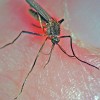 The black-tailed mosquito is unusual because it overwinters as larvae while most mosquito species overwinter as either adults or eggs. Culiseta melanura is important because of its role in the transmission cycle of eastern equine encephalitis virus and potentially West Nile virus: because adult female Culiseta melanura primarily take their blood meals from birds, they are responsible for transmitting eastern equine encephalitis virus between birds. This 6-page fact sheet was written by Eva Buckner, Angelique Showman, and C. Roxanne Connelly, and published by the UF Department of Entomology and Nematology, September 2012.
The black-tailed mosquito is unusual because it overwinters as larvae while most mosquito species overwinter as either adults or eggs. Culiseta melanura is important because of its role in the transmission cycle of eastern equine encephalitis virus and potentially West Nile virus: because adult female Culiseta melanura primarily take their blood meals from birds, they are responsible for transmitting eastern equine encephalitis virus between birds. This 6-page fact sheet was written by Eva Buckner, Angelique Showman, and C. Roxanne Connelly, and published by the UF Department of Entomology and Nematology, September 2012.
http://edis.ifas.ufl.edu/in950
Florida Scorpionfly, Panorpa floridana Byers (Insecta: Mecoptera: Panorpidae) (EENY538/IN949)
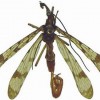 Have you seen this insect? No living individuals of Panorpa floridana ever have been observed. Knowledge of this species of scorpionfly is limited to five specimens from Alachua and Clay counties in northern peninsular Florida, the last one collected in 1982. This 4-page fact sheet was written by Louis A. Somma and James C. Dunford, and published by the UF Department of Entomology and Nematology, September 2012.
Have you seen this insect? No living individuals of Panorpa floridana ever have been observed. Knowledge of this species of scorpionfly is limited to five specimens from Alachua and Clay counties in northern peninsular Florida, the last one collected in 1982. This 4-page fact sheet was written by Louis A. Somma and James C. Dunford, and published by the UF Department of Entomology and Nematology, September 2012.
http://edis.ifas.ufl.edu/in949
Cactus Moth, Cactoblastis cactorum (Berg) (Insecta: Lepidoptera: Pyralidae) (EENY056/IN213)
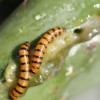 Since its arrival in the Florida Keys in 1989, this invasive species has become a serious threat to the diversity and abundance of Opuntia cactus in North America. The spread of this moth raises concerns about harm to rare opuntioid species (prickly pear and related cacti), the endangerment of wild opuntioids in the southwestern United States and Mexico and the consequent effects on entire desert ecosystems and economic hardship for communities in Mexico that cultivate and sell Opuntia. This 5-page fact sheet was written by D. H. Habeck, F. D. Bennett, and Christine Miller, and published by the UF Department of Entomology and Nematology, September 2012.
Since its arrival in the Florida Keys in 1989, this invasive species has become a serious threat to the diversity and abundance of Opuntia cactus in North America. The spread of this moth raises concerns about harm to rare opuntioid species (prickly pear and related cacti), the endangerment of wild opuntioids in the southwestern United States and Mexico and the consequent effects on entire desert ecosystems and economic hardship for communities in Mexico that cultivate and sell Opuntia. This 5-page fact sheet was written by D. H. Habeck, F. D. Bennett, and Christine Miller, and published by the UF Department of Entomology and Nematology, September 2012.
http://edis.ifas.ufl.edu/in213
Earthworm, suborder Crassiclitellata, cohort Terrimegadrili (Jamieson, 1988) (EENY532/IN946)
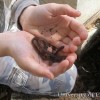 Like insects, earthworms are among the animals most frequently encountered by many Floridians. Our kids play with them, dissect them in middle school biology, we fish with them, they crawl across our sidewalks and live in our flower pots. Despite this, their ecological and economic importance often goes unrecognized. Earthworms have several important ecological roles. Additionally, some species are used commercially for bait, animal feed, environmental remediation, and composting. This 6-page fact sheet was written by William T. Crow, and published by the UF Department of Entomology and Nematology, September 2012.
Like insects, earthworms are among the animals most frequently encountered by many Floridians. Our kids play with them, dissect them in middle school biology, we fish with them, they crawl across our sidewalks and live in our flower pots. Despite this, their ecological and economic importance often goes unrecognized. Earthworms have several important ecological roles. Additionally, some species are used commercially for bait, animal feed, environmental remediation, and composting. This 6-page fact sheet was written by William T. Crow, and published by the UF Department of Entomology and Nematology, September 2012.
http://edis.ifas.ufl.edu/in946
An Asian Ground Beetle, Mochtherus tetraspilotus (MacLeay) (Coleoptera: Carabidae: Lebiini) (EENY533/IN951)
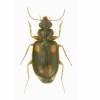 Mochtherus tetraspilotus (MacLeay) was first detected in southern Florida in 1992. Since then specimens have been collected in Gainesville and at Archbold Biological Station in Highlands County. Adult members of this group of Carabidae are known to be predators. The impact of this species on our native species remains to be determined, as does the source of introduction. Its rapid spread in Florida suggests that it may soon be found throughout the Gulf States. This 2-page fact sheet was written by Paul M. Choate, and published by the UF Department of Entomology and Nematology, September 2012.
Mochtherus tetraspilotus (MacLeay) was first detected in southern Florida in 1992. Since then specimens have been collected in Gainesville and at Archbold Biological Station in Highlands County. Adult members of this group of Carabidae are known to be predators. The impact of this species on our native species remains to be determined, as does the source of introduction. Its rapid spread in Florida suggests that it may soon be found throughout the Gulf States. This 2-page fact sheet was written by Paul M. Choate, and published by the UF Department of Entomology and Nematology, September 2012.
http://edis.ifas.ufl.edu/in951